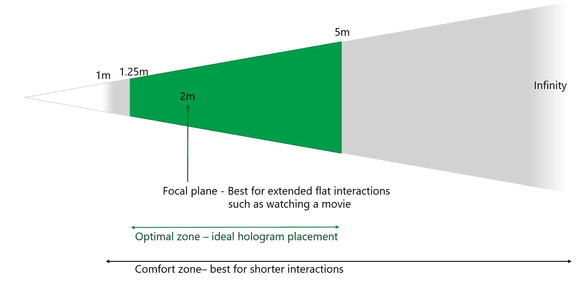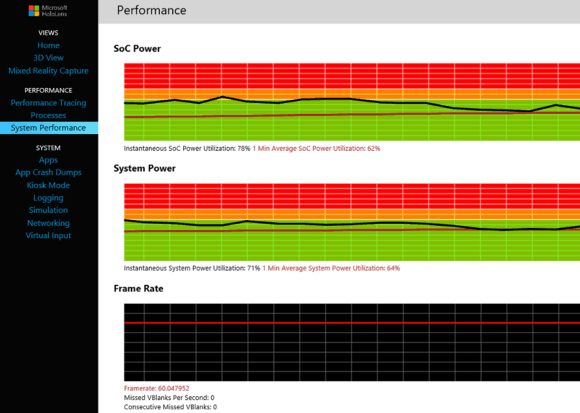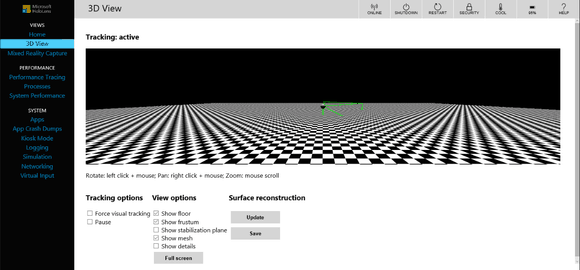As Microsoft is finally ready to start shipping is first HoloLens devices to developers at the end of this month, we learned a lot of details this week about the specs of the HoloLens Development Edition as well as its various bundled apps. That doesn’t tell the whole story though, as our colleagues at PCWorld took a close look at the developer docs to dig out interesting details about the technology behind Microsoft’s augmneted reality headset.
First, you may already know that HoloLens has a quite limited field of view, and Microsoft actually explained that HoloLens displays are fixed at an optical distance of 2 meters. If you move closer, holograms will start to fade out, and they will completely disappear when you’ll come close to 0.85 meters. This limitation was set because as you move too close to holograms, the strain of trying to focus each eye becomes too difficult and the experience becomes then unpleasant.
Microsoft added:
“Putting content at 2.0m is also advantageous because the two displays are designed to fully overlap at this distance. For images placed off this plane, as they move off the side of holographic frame they will disappear from one display while still being visible on the other.”

The HoloLens Development Edition will also sport a pair of HD 16:9 light engines, with a default and maximum supported resolution of a 1268×720 per eye and a lowest supported resolution of 634×360 (360p). In its documentation, Microsoft insists developer should optimize for a minimum of 60 frames per second when coding HoloLens apps to eliminate visual discomfort for users. However, the frame rate will drop to a lower 30 FPS when capturing video with the headset.
Next, Microsoft has been explaining that HoloLens features a “holographic resolution” of 2.3 million “light points” with a “holographic density” of 2.5K radiants, with the more radiants and points of light, the brighter and richer the image. However, PCWorld calculated that these 2.3 million “light points” are actually more than the 913,000 available pixels that the HoloLens can actually render. But it probably won’t matter to users as the HoloLens only has to display holograms that take a small portion of the screen. Moreover, Microsoft’s headset may actually get to preserve some of its processing power unlike other VR headsets that have to draw every pixels on their screens.
As a standalone device, HoloLens also has some storage and memory limitations. That’s why Microsoft is asking developers to limit the size of HoloLens apps and games to 900 megabytes, and we have yet to know if this restriction will put developers creativity on hold. Furthermore, as the HoloLens is passively cooled, apps that are too computer-intensive and cause the headset to heat too much will cause HoloLens to automatically shut down.

It will also be possible to record videos using the headset’s front-facing camera, but the “mixed-reality capture” will also enable recording holograms in your field of view. However, there are some limitations as both video and pictures will be captured at 1408×792 resolution, and your recorded time will be capped to three minutes.
Last but not least, remote management of the headset will be enabled using the HoloLens Device Portal. When the headset it connected to a network, you will be able to use the app to track the headset performance, download video captured by the device, and even have a glimpse of what the HoloLens sees thanks to an interesting “3D view feature”.

That’s a number of interesting details about HoloLens features and restrictions, but this is really a version one product of a standalone AR device, and so HoloLens can’t really be compared with cheaper and more powerful alternatives like Oculus Rift and HTC Vive. But as developers now have more information about the device’s limitations, we’ll have to wait to see how they’re going to manage those limitations to bring innovative apps to Microsoft’s augmented reality headset.

